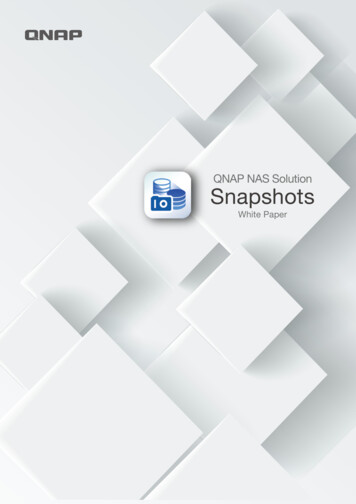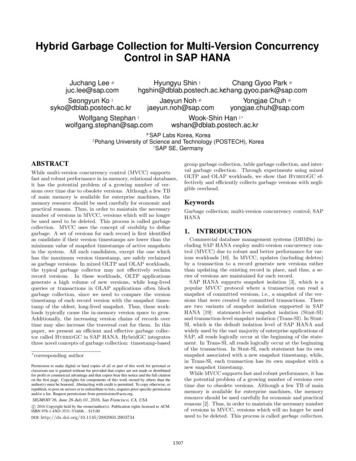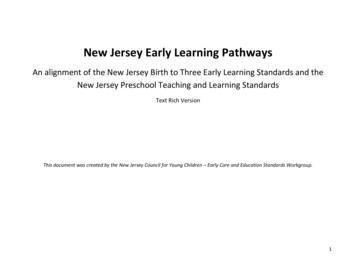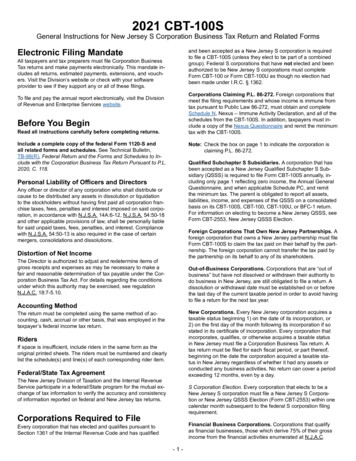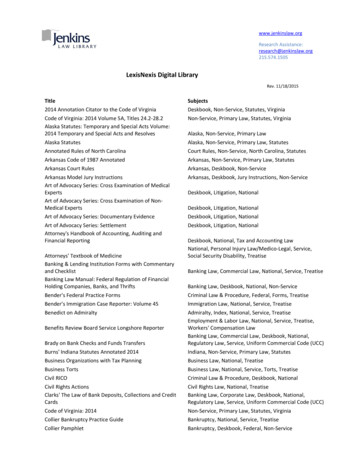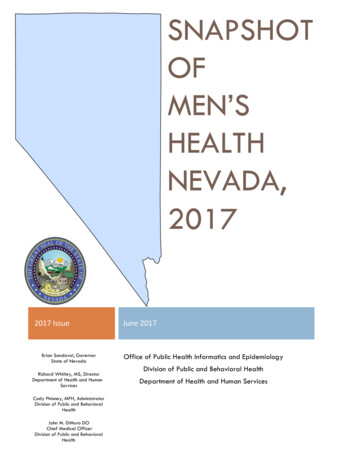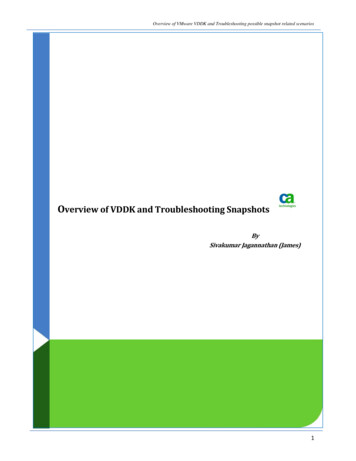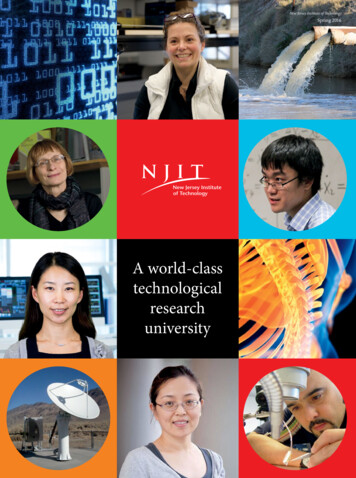
Transcription
New Jersey Institute of TechnologySpring 2016A world-classtechnologicalresearchuniversity
New Jersey Institute of TechnologyTOP 10among public technological universitiesin faculty scholarly productivityaccording to Academic Analytics45%INCREASEin external academic research awardsover the past two years
New Jersey Institute of TechnologyResearching ways toprotect our water supplyDevastating droughts in the West, oil spills in the Gulf, lead-laceddrinking water in Flint, Mich. Every story has lent greaterurgency to the work of NJIT researchers developing technologiesand processes to protect America’s water quality and supply.NJIT Professor Michel Boufadel, an international expert inwater contamination and director of NJIT’s Center for NaturalResources Development and Protection, is working withmembers of the oil industry to improve spill preparedness andresponse capabilities. His previous work included technicalanalyses and remedial strategies related to the cleanup of theDeepwater Horizon and Exxon Valdez oil spills. Kam Sirkar, whoholds 28 patents and is a distinguished professor of chemicalengineering, is applying innovative membrane-separationtechnologies to improve water-desalination processesand to remove pollutants from industrial runoff.And Mengyan Li, assistant professor of chemistry,is developing water remediation techniques thatdeploy microorganisms to biodegrade organicpollutants. His research also seeks ways toimprove urban water-treatment methods byusing nanotechnology to disinfect suppliescontaminated with pathogens.Identifying the source ofthe Sun’s accelerated energyChen, et al., NRAO/AUI/NSF, NASAOne of the central mysteries of solarflares is how these explosions produceradiation and accelerate particles to nearlight speed within seconds. The mostpowerful flares release magnetic energyequal to the force of millions of hydrogenbombs. The threat for our tech-basedsociety is obvious: energized particleswith the power to penetrate Earth’satmosphere, knock out satellites and take down power grids.The research of Dale Gary and Bin Chen examines the physicsbehind solar flares, focusing on the elusive structure known as“termination shock,” believed to play a key role in convertingreleased magnetic energy from flares into kinetic energy inaccelerated particles. Through observations of a long-lastingsolar flare captured by a radio telescope, the two NJIT scientistshave demonstrated the structure’s role in accelerating particles.Dr. Chen used millions of images captured by the Jansky VeryLarge Array in developing a technique to visualize shockdynamics. NJIT’s own radio telescope, the Expanded OwensValley Solar Array in California, at left, will become the firstsolar-dedicated array equipped with this new imaging capability.
New Jersey Institute of TechnologyReverse-engineering thebiomechanics of natureBrooke Flammang, an assistant professor of biology in NJIT’sCollege of Science and Liberal Arts, is following in the footstepsof the Swiss engineer who invented Velcro after studying theburrs that stuck to his clothing during a walk in the woods.Dr. Flammang is focusing on the remora fish, specifically thebiological mechanism on the remora’s head that enables it togrip onto the bodies of fast-movinghosts, then release quickly whensurvival necessitates.WaterFrame/AlamyBy studying the disc-shaped featurethat enables the remora to latch ontothe varied surfaces of sharks, rays,dolphins, sea turtles and even otherremoras, Dr. Flammang’s team in theFluid Locomotion Laboratory discovereda complex mechanism that includes a modified fin structure withtiny spikes that generate friction to adhere to the host.Understanding the mechanics of this process could helpresearchers and engineers create designs for a range of devicesthat stick well and release easily, including pain-free bandagesand tags for tracking endangered species that are less harmfulthan barbs and more effective than suction alone.Extracting motor signalsfrom the spinal cordSince the 1970s, a brain-computer interface — technology thatuses neural signals to communicate with electronic devices —has been pursued as a way to restore function in people withdisabilities resulting from injuries to the central nervous system,such as spinal cord injury, traumatic brain injury and stroke.Despite years of research, significant challenges remain.In search of a solution, Mesut Sahin, a pioneer in the fieldof neural engineering and chief investigator at NJIT’s NeuralProsthetics Laboratory, is studying the spinal cord as analternative site for an electronic interface. Dr. Sahin’s researchseeks to extract volitional motor signals from an area of thespinal cord above the site of injury. In recent animal studies, heand his colleagues have succeeded in not only capturing brainsignals from the cervical spinal cord, but showing the signals’correlation to limb movements.Another line of research by Dr. Sahinand his colleagues is the use ofelectrodes and alternativemethods to stimulate the airwaymuscles of people sufferingfrom obstructive sleep apnea,a condition that affects up to6 percent of the world’s population.
New Jersey Institute of TechnologyHarnessing big data to create usable,high-value informationBig data has enormous value — but only if the propertools exist to process, organize, analyze and unlock theriches residing in these dense, ever-expanding troves.The volume and diversity of data generated on a daily basis is growing exponentially.Information gathered from computers, smartphones, satellites, sensors, microprocessors andother sources has the potential to reveal valuable and actionable insights.In health care alone, analytics of big data could change every inch of the nation’s 3 trillionhealth care industry. The payoff would be enormous: better patient outcomes, greatertransparency, and more accessible and affordable care. That’s why the research of Yi Chen,associate professor in both NJIT’s Martin Tuchman School of Management and College ofComputing Sciences, is vital. Dr. Chen’s work is focused on harnessing social media andonline health care forums to create patient-centered tools to help patients, caregivers anddoctors while also enabling researchers to discover and generate new knowledge. Withthe sponsorship of The Leir Charitable Foundations, Dr. Chen is also bringing together topresearchers, policymakers, and business and tech leaders. Her overarching goal is togalvanize action and identify the challenges, opportunities and future directions of big dataas it relates to improving health care.On another front, Associate Professor of Computer Science Chase Wu is working to tamethe explosion of information and increase the productivity of scientists using big data.Currently, scientific applications typically generate terabytes of simulation or experimentaldata — all of which must be stored, managed and often transferred to differentgeographical locations for processing and analysis — overwhelming scientific computing andnetwork infrastructures. With funding from the U.S. Department of Energy’s Office ofScience, Dr. Wu is designing and developing easy-to-use computing and networking toolkitsfor the complex workflows in these high-performance environments.CYBER SOLUTIONS FOR THEDEPARTMENT OF DEFENSEAssociate Professor of ComputerScience and Director of theNJIT Cybersecurity ResearchCenter, Kurt Rohloff isleading an NJIT team on thePALISADE project, a multiyear,multimillion-dollar effortthat is part of the SafeWareprogram funded by theDefense Advanced ResearchProjects Agency (DARPA) andthe Army Research Office.DARPA’s game-changingSafeWare cybersecurityprogram aims to developencrypted computingtechnologies, address softwaresecurity limitations andprotect proprietary software.Dr. Rohloff’s team includestwo MIT professors, a TuringAward winner, a Universityof California, San Diegoprofessor and Raytheon BBNTechnologies, a top researchand development firm.The PALISADE project hasreceived more than 750,000in funding and is eligible forup to 3.5 million. Projectfunding comes on the heels ofDr. Rohloff’s recent work onother DARPA projects andNJIT’s recent designation bythe National Security Agencyand Department of HomelandSecurity as a National Centerof Academic Excellence inCyber Defense Education.The growing portfolio ofcybersecurity activitybroadens the university’sresearch in this vital area.
New Jersey Institute of TechnologySearching for Biomarkersof Cognitive DeficitsXiaobo Li is working at the intersection of neurobiology andneuroimaging to better understand the biological underpinnings ofcognitive disorders. As director of the Computational Neuroanatomyand Neuroinformatics lab at NJIT, her goal is to integrate predictiveanalytical and statistical models with sophisticated neuroimagingtechniques in order to improve clinical diagnoses of cognitive deficitsassociated with Attention Deficit/Hyperactivity Disorder (ADHD),Autism Spectrum Disorderand schizophrenia,among others.Exploring Ethicaland PracticalImplications ofScience PolicyAccounting for theHuman ElementMing Fang aims to increase theeffectiveness of accounting practicesin conveying information toshareholders, regulators and others.Her current research looks at theimpact of social connectionsamong managers from differentfirms on accounting practices suchas earnings management andtax avoidance. She studies a rangeof topics within empiricalaccounting, including financialreporting, tax evasion, fraud andregulation, corporate innovationand corporate governance.Are scientists and engineerswho receive federal or stateresearch grants obligedto address societal needs orcan they pursue knowledgefor its own sake? Shouldfunding agencies institute a“societal impact” requirementand, if so, how would theyimplement it? These are justtwo issues surroundingresearch ethics andaccountability in the sciencesociety relationship that BrittHolbrook investigates. Hiswork has far-reachingimplications for policymakersand the increasinglyglobalized research enterprise.Research SInterpretingCultural Expressionin ArchitectureCombatingNeurological DiseaseXiaoyang Xu, a specialist in novelbiomaterials and nanotechnologies,has teamed up with James Haorah,an expert in brain biology, toimprove the treatment of cripplingneurological disorders. Newtherapies for diseases such asAlzheimer’s and Parkinson’s havebeen only partly effective to datebecause they are unable topenetrate the brain’s protectivemembrane to reach the centralnervous system. The researcherspropose encapsulating drugs insidea nanoparticle equipped with a setof chemical tools to “unlock” themembrane by altering its surface.Architectural historian ZeynepCelik studies how politics andideologies shape cities andinfluence architecture. Hermost recent work, awarded a 100,000 prize, shows for thefirst time that the late OttomanEmpire was a force in therise of modernity, a culturaldevelopment traditionallyattributed strictly to Westernthought and influence. InJanuary, the School ofEngineering and Architectureat Ghent University honoredDr. Celik with the GeorgeSarton Medal, which recognizesoutstanding historians ofscience in the internationalscholarly community.Building a Next-Gen Search Enginefor Learning SupportWith funding from the National Science Foundation, VincentOria and other computer scientists at NJIT and partneruniversities are developing ways to make course content moreorganized, interactive and accessible. A specialist in multimediadatabases, Dr. Oria’s research will enable students to easilysearch information-rich multimedia course materials — includingtextbooks, slides, and audio and video content — to find specificsubject matter. With the ultimate aim of improving learning, thetechnology and methodology could enable a truly interactive,individualized curriculum that assembles course materials basedon learning styles and other personalized needs.
New Jersey Institute of TechnologyAiding Recovery from InjuryDetecting a Deadly CancerEon Soo Lee and Bharath Babu Nunna aredeveloping a microbiosensor chip to diagnoseovarian cancer without any external equipment.The chip consists of microchannels withspecially designed flow patterns coated withantibodies and novel sensing technologies.Cancer antigens in the blood pass through thechannels, where they are detected bothquantitatively and qualitatively, accuratelydiagnosing the cancer along with itsdevelopment stage. If their work provessuccessful, the microchip could enableunobtrusive, cost-effective early detection ofthis deadly cancer.Research projects in Gal Haspel’s lab focus onneural connectivity, activity and recovery frominjury and, ultimately, could help individualsrecover from neurological damage, includingspinal cord injury. He and his colleagues arestudying the neurobiology of locomotion in thenematode C. elegans, a transparent round wormthat was the first multicellular organism to haveits entire genome sequenced and the onlyorganism to date with its neural connections or“wiring diagram” so thoroughly mapped. 3.4Mlicensing revenuesfrom patent activityover the last decadenapshotsMaking Smart Gels SmarterPolymeric gels are increasingly ubiquitous andused in everything from contact lenses tooil-well seals. Smart gels that respond to stimulisuch as changes in temperature, pH andion concentration are being developed forapplications as varied as drug delivery,biomedical sensing, tissue engineering andhydraulic fracturing. Despite their huge,sector-spanning potential, little is known abouthow these gels perform in complex, real-worldsettings outside of the lab. Shawn Chester, anexpert in materials behavior, is providingengineers with the simulation tools to test smartgels in particular applications so they can beused with confidence and deliver on theirhighly anticipated promise. 3,120master’s anddoctoral candidatesAdvancing 5G Mobile NetworksOsvaldo Simeone and colleagues at NJIT’sElisha Yegal Bar-Ness Center for WirelessCommunications and Signal ProcessingResearch are addressing the challenges posedby the next generation of mobile networks.Dr. Simeone is leading a team developingenabling technologies, and transmission modelsand protocols, for mobile cloud computing. 85%success ratefor businesses inNJIT’s high-techand life sciencesbusiness incubator
New Jersey Institute of TechnologyQ&AAtam P. DhawanNJIT Vice Provost for ResearchToday, who are the stakeholders in research at NJIT and other academic institutions?For a long time, the faculty, their students and research-funding agencies were considered the primarystakeholders. However, the broader community that ultimately benefits from academic research has alwaysbeen a “silent” stakeholder.Although previously present in a back seat, the community is gaining full recognition as a research partner.This is so because university-based research must now engage all interested parties in the community —including other researchers and institutions, industries and government agencies — if we are to promotescientific discovery and successfully address economic and social needs.Does the community engagement you describe represent significant change inthe academic research environment?It does. Given the resources required, universities alone cannot initiate and sustain the highest-quality researchwithout embracing the needs of the external community and focusing on research that meets those needs.Accordingly, we must continue to build new pathways connecting the university and the community. Theremust be a seamless link leading from basic research to real-world innovations, and to validation of thoseinnovations in support of community progress.How do students participate in research today at NJIT, and how do they benefitfrom the evolving character of research?Our students will eventually apply their knowledge in the real world. So they must be prepared to participatein research that effectively connects the university with the community.At NJIT, this preparation begins as early as sophomore year through programs encouraging students todevelop entrepreneurial concepts into functional prototypes, and which invite evaluation of thoseprototypes by advisors from the public and private sectors. Engagement with the community also benefitsgraduate students, since community funding for research allows us to increase graduate enrollment,including Ph.D. candidates.What is NJIT doing structurally to accommodate the changing nature of research?As the community has become a participating partner in setting research priorities, NJIT has integratedcommunity input into its strategic plan for addressing real-world needs in four key sectors. These aresustainability, life sciences and engineering, data sciences and information technology, and transdisciplinaryareas. Further, within these sectors, the community has helped NJIT identify more than a dozen specificareas of relevant research.NJIT is also establishing formal liaison groups to ensure timely, effective communication with the community.In every respect, our goal is seamless collaboration between researchers and the community for improvingour quality of life, and for assuring the funding needed.What more must NJIT, as well as other schools, do to promote productive research?Along with the community partnership I have emphasized, we must foster cooperation with other universitiesand research institutions so that we work together to meet community needs, which cannot be achievedindividually today. NJIT is already advancing this collaboration in association with schools such as Rutgersand Princeton.Connecting researchers with the community also requires an “open research” environment integrating thecapabilities of multiple institutions. Proprietary interests must be considered, of course. But this can be donein ways that benefit each collaborating institution. An open, shared-resource environment is essential forinvestigating complex scientific questions and developing credible solutions that work in the real world, inthe community. This is critical for scientific progress, economic growth and social improvement.Stories of Innovationnjit.edu/storiesofinnovationUniversity Heights Newark, NJ 07102-1982 973-596-3220#3 59M 3/16Atam P. Dhawan, distinguishedprofessor of Electrical andComputer Engineering,was appointed vice provostfor research at NJIT in July2015. He has publishedmore than 215 articles inrefereed journals, books andconference proceedings. Heis a fellow of the NationalAcademy of Inventors (NAI),American Institute of Medicaland Biological Engineering(AIMBE), and Institute ofElectrical and ElectronicsEngineering (IEEE).
NJIT's recent designation by the National Security Agency and Department of Homeland Security as a National Center of Academic Excellence in Cyber Defense Education. The growing portfolio of cybersecurity activity broadens the university's research in this vital area. New Jersey Institute of Technology New Jersey Institute of Technology

